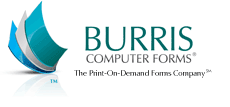10 Critical Must Have Elements In An International Commercial Invoice
by Chelsea Camper | Last Updated June 21, 2023The commercial invoice form can easily be considered as the most important document when shipping internationally since your package must have one before it can be cleared through customs.
Before digging into those critical elements you need on your international commercial invoice, let’s talk about what an “international commercial invoice” is.
What is an International Commercial Invoice?
It is a statement (usually printed out in the form of an invoice) that details the items being transported that have been purchased by, or will be sold by someone, outside of the United States. In order for your package to clear customs it must be accompanied by a commercial invoice. The form is a requirement of customs, not of transportation. Your package will not clear customs without one.
The commercial invoice should be printed out on your company’s letter head and 2 to 4 copies of it need to be made (number of copies varies slightly with shipper). Check with your shipper to confirm the number of copies you need to make (when in doubt, err on the side of extra rather than too few).
The Critical 10
Now it’s time to dig into those critical ten elements that must be included in your commercial invoice. This is not an extensive list; check with your shipper for the full list of elements to include.
1. Name of the person/business selling the items.
As the shipper/seller, you’ll need to include all of your contact information near the top of the commercial invoice. This includes everything from phone number to address to Tax ID number. Depending on your location, you may need to include more information. Your shipping company should be able to let you know what information you need to include.
2. Full, clear description of the item(s).
If you’re selling orange bouncy balls with green and purple speckles, make sure you note on the invoice that the items are “Orange rubber balls with green and purple speckles.” You’ll also need to include the quantity of each item.
3. Monetary value of item(s).
This can either be the price you paid or estimated value. Make sure that you state the value of the item in both your currency as well as your receiver’s currency.
4. Name of the person/business buying the item(s).
Contact information needs to be included for the party that’s buying your item(s). This again includes everything from phone number to address. More information may be required depending on their location. Contact your shipping carrier for more information.
5. Country of origin.
Simply, where the item was made. You may have made it in your own country or have outsourced it to another country. Either way, you need to state the item(s) country of orgin.
6. Export reason.
It may be as simple as someone purchased it online or it could be that you’re sending it over to a trade show. If you’re just sending the item over as a gift, you still need to state that.
7. Information on the port of entry the item(s) are headed to.
You need to include the name of the port and the country of the item(s) final destination on your commercial invoice. More information may be needed depending on your location of the item(s) final destination. Contact your shipping carrier for more information.
8. Name of the person/business importing the items if not the purchaser
Sometimes there’s a middle man who will receive the item(s) when they arrive at port. If so, you must include their contact information. This, again, includes addresses and phone numbers. Additional information may be required; contact your shipping carrier for more information.
9. Shipper’s Reference Number
Usually this is an invoice number or order number. Make sure that you keep records of your international shipping invoice/order numbers for future reference.
10. Destination Control Statement
A Destination Control Statement is a standard statement that needs to be placed on several international shipping documents, including the commercial invoice. It can be printed, stamped, or even written onto the documents, but it must be on there.
Why? The statement serves as a precautionary measure in case your package ends up in a restricted country by accident. This statement protects your package under US law so that its course cannot be changed nor the package tampered with.
“These commodities, technology, or software were exported from the United States in accordance with the export administration regulations. Diversion contrary to U.S. law is prohibited.”
Extra Information
Use this tool from UPS to find out exactly which documents you’ll need for importing or exporting as well as restricted item lists for most countries: UPS Tradeability
You can visit the US Customs and Border Protection website for more information:
US Customs and Border Protection
Looking for international commercial invoices with peel out labels for addresses or shipping labels? Check out some shipping labels!
Image: NASA Goddard Photo and Video



